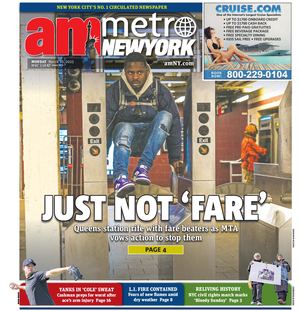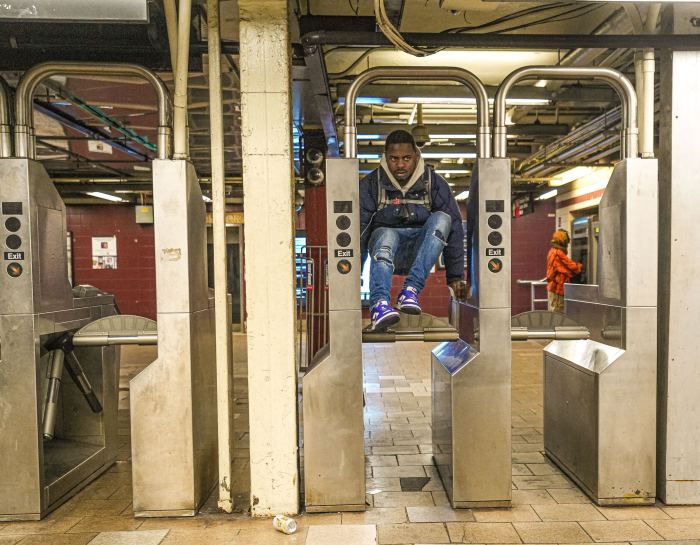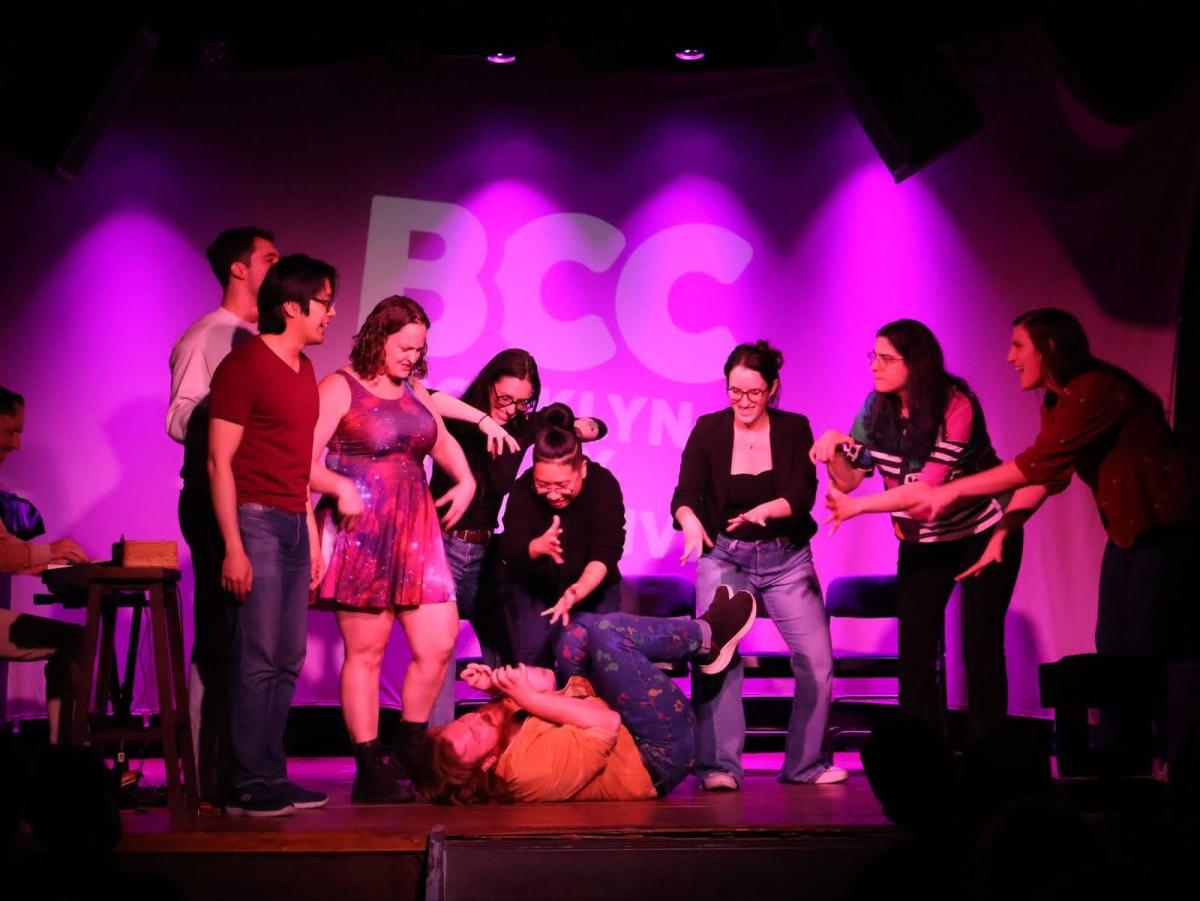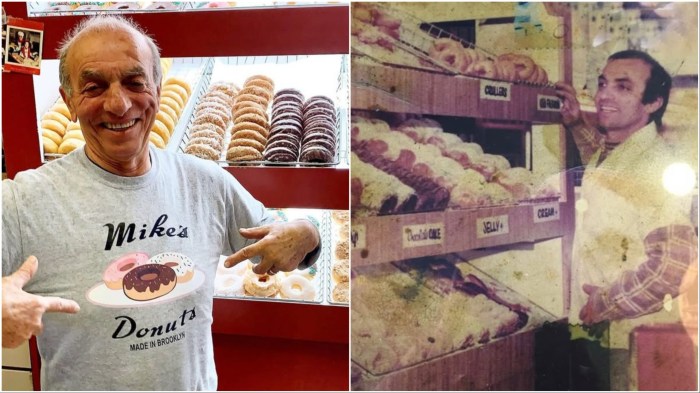The MTA on Monday vowed to crack down on fare evasion after publishing estimates that more than a half-million people ride subways and buses without paying each day.
As the transit authority grapples with a budget crisis and steadily declining subway and bus service, NYC Transit President Andy Byford promised to “equally” focus on fare evasion and finding service fixes. Roughly 208,000 subway riders evade fares each day, while another 384,000 city bus riders skip on paying, according to an observational study the MTA conducted at 180 fare control areas (the areas near turnstiles) and 140 bus routes per quarter.
“I think the most pressing priority for customers is that they want reliable regular service. That has to be job number one — and obviously it must be safe,” Byford told reporters Monday after a special convening of the MTA board to discuss the issue of fare evasion. “But equally, I think New Yorkers would expect that everyone pay their way.”
That level of fare-beating has cost the MTA an estimated $215 million in lost revenue this year — a “huge problem,” according to Byford, especially as the MTA faces a $1 billion budget gap by 2021. But while officials at the authority were alarmed, criminal justice advocates responded to the study with skepticism and concern that the enforcement could unfairly target lower-income people of color.
David Jones, an MTA board member and advocate for the decriminalization of fare evasion, said the NYPD’s "broken windows" approach to the issue led to an “over enforcement” in minority communities and did not do enough to stop what the MTA described as a systemic problem across the city.
“I want to make sure this is not race-based [enforcement] and at least initially it was,” said Jones, who is also the president and CEO of the Community Service Society in New York, in calling for a more equitable approach to fare evasion spread across the subway and bus systems.
The MTA has already begun working with the NYPD to coordinate enhanced enforcement of fare-beating and create “fare evasion strike teams” among the TransitBureau’s 2,600 officers, according to Byford. The agency is expanding its deployment of its “eagle team,” trained officials with the authority to issue fare-beating tickets, to patrol local bus routes in addition to the Select Bus Service it currently handles.
Workers will be reviewing cameras near turnstiles to identify problem stations for targeted enforcement and more MTA staff will be positioned near turnstiles to serve as visual deterrents. Byford said he would also be discussing legislation to increase fines for fare evasion with Albany lawmakers. The penalty is currently a $100 fine with officers given the discretion to make arrests.
Compared to other transit authorities, the MTA’s fare-beating rates are higher than average — especially on buses, according to the authority’s study. Roughly 17 percent of the MTA’s 1.831 million daily local bus riders don’t pay the fare, markedly higher than the 4.1 percent average among peer transit authorities.
The MTA did not respond to a request asking for a list of the transit agencies used for its comparative analysis and did not provide exact details on which stations and bus routes were surveyed as the basis for the study. Having 208,000 daily turnstile jumpers would equate to roughly 18 fare evaders at every subway station each hour.
The percent of subway fare-beaters doubled since 2011, while the percent of bus fare evaders more than doubled, according to the MTA. But the NYPD has recently let up on both issuing summonses and making arrests for the crime.
Police have arrested 5,236 fare-beaters through October of this year, a 66.4 percent drop compared to the same point last year. The department has issued 41,445 summonses, a 13.6 percent drop compared to the same time period last year. An NYPD spokeswoman said that while summonses might be down for the year, the department experienced an uptick in stops over the past several months.
“Recent fare evasion policy changes have reduced time-consuming arrests in favor of keeping Transit officers on patrol where they ensure the safety for straphangers,” the spokeswoman said. “In fact, fare evasion contacts by our officers for this recent month show a clear increase, contacts where the overwhelming majority walk away with a civil summons.”
A drop in arrests could be attributed to pressure from advocates and officials who have criticized the city for arresting people for what they describe as a crime of poverty.
Last year, Manhattan District Attorney Cy Vance announced that he would end the criminal prosecution of most subway fare-evaders. Byford has attempted to link a recent spike in fare evasion to Vance’s policy and insisted that turnstile jumpers are “quite often” well-off because police have stopped offenders with cash on hand.
Danny Frost, a spokesman for Vance, noted that the DA’s policy does nothing to limit the number of people police could stop, or how many civil or criminal summonses they could issue. He said the stance could actually help increase enforcement.
“By issuing more ejections and summonses, and initiating fewer prosecutions, officers spend less time processing arrestees and escorting them to court, and more time on patrol at these critical posts,” Frost said in a statement.
Robert Gangi, a criminal justice advocate and director at Police Reform Organizing Project, viewed the data cynically and felt that the estimated figures were “extraordinarily high.” He said the MTA should worry about improving service.
“They clearly have an ax to grind and they’ve come up with numbers that sharpen the particular ax that they’re grinding,” Gangi said. "To use a cliché, there’s a blame game going on. The MTA is facing difficulties in providing service and this is a way to blame poor people, black and brown New Yorkers.”
Correction: An earlier version of this story should have noted the MTA survey encompasses 180 fare control areas and 140 bus routes per quarter.





































